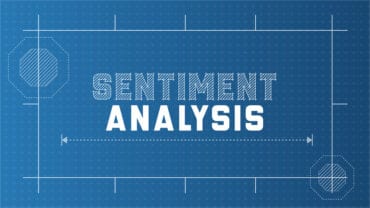
AI and other innovation areas are drawing government regulatory interest. To avoid problems, the tech industry is taking proactive measures to set its own standards, and open source is emerging as a pivotal force in this endeavor.
Open source software (OSS) has driven technological innovation for decades, challenging the traditional proprietary model and fostering collaboration among developers worldwide. As we navigate the ever-evolving landscape of technology, it becomes imperative to assess the future viability of open-source software. In this article, we’ll explore the factors that contribute to the enduring strength of open source and why it continues to be a cornerstone of the digital future.
Open-source continues to be a valuable resource
Organizations must understand the nature of open-source and recognize that supporting and maintaining it is a critical piece of continue innovation across industries and technology applications. Here’s why.
Community-driven Innovation
One of the key strengths of open source lies in its community-driven nature. Unlike proprietary software developed within closed environments, projects benefit from the diverse perspectives of a global community of developers. This collaborative approach to innovation accelerates problem-solving, promotes transparency, and ensures that software evolves to meet the needs of a broad user base.
Flexibility and Customization:
Open-source software offers unparalleled flexibility and customization options. Users have access to the source code, allowing them to modify and tailor the software to suit their specific requirements. This adaptability is crucial in an era where technology needs are diverse and rapidly changing, enabling businesses and individuals to build solutions that align precisely with their objectives.
Cost Efficiency:
The cost factor has long been a compelling argument in favor of open-source software. The absence of licensing fees and the ability to use, modify, and distribute software freely significantly reduces the overall cost of ownership. This makes open source an attractive option for startups, small businesses, and organizations with budget constraints, fostering a more inclusive technological landscape.
Security and Reliability:
Contrary to misconceptions, open-source software is often more secure and reliable than its proprietary counterparts. The transparency of the source code allows for continuous scrutiny by the global developer community, quickly identifying and rectifying vulnerabilities. This collaborative security model promotes a proactive approach to addressing potential threats, contributing to the overall robustness of open-source solutions.
Longevity and Sustainable Development:
The collaborative and decentralized nature of open-source development minimizes the risk of project abandonment. The community can maintain and improve the software even if the original developers move on. This longevity ensures that investments in open-source technologies remain relevant and supported over the long term.
Evolving Business Models:
The traditional notion that open-source software is not profitable is changing. Many successful companies, including industry giants like Red Hat, have embraced it and built sustainable business models around it. From support and consulting services to cloud-based solutions, businesses are finding innovative ways to monetize open-source software while still adhering to the principles of collaboration and openness.
See also: ACM Pushes For Safety Culture In Algorithm Design
Collaboration in the real world: AI Innovation
As artificial intelligence (AI) continues its rapid evolution, governments and industries grapple with the challenge of creating regulations to govern this transformative technology. The urgency to establish AI standards is underscored by concerns about job displacement and potential risks associated with unregulated AI at scale. While regulators work towards comprehensive frameworks, the tech industry is taking proactive measures to set its own standards, and open source is emerging as a pivotal force in this endeavor.
The Role of Open Source in AI Standardization
The AI Engineer Foundation has taken a notable stance in pursuing AI standardization and open collaboration. This nonprofit organization, recently announced at the AI Engineer Summit, is dedicated to open-sourcing and standardizing AI advancements. The foundation’s mission is to empower a diverse range of participants, from individual developers to large organizations, to contribute to and understand the development of AI in an interoperable, inclusive, and community-driven manner.
Sasha Sheng, the AI Engineer Foundation’s founder, emphasizes elevating the entire industry by fostering collaboration and standardization. The foundation aims to be a neutral ground, avoid vendor bias, and create a space where contributors can work collectively to advance AI technologies.
AI Agent Protocol: A Step Towards Standardization
As AI technology matures and its adoption becomes more widespread, the need for standardization becomes apparent. Like HTTP standardized communication on the early web, AI standardization aims to establish common interfaces for seamless collaboration. The AI Engineer Foundation’s first project, the tech-agnostic Agent Protocol, is an OpenAPI specification designed to create a unified interface for interacting with AI agents.
The Agent Protocol specifies data input, output, and endpoints, providing a standardized foundation for AI development. Early integration partners, including LangChain and LlamaIndex, are already leveraging Agent Protocol, showcasing its potential to become a unifying force in a highly fragmented marketplace.
Addressing Fragmentation and Encouraging Adoption
The AI Engineer Foundation acknowledges the existence of competing specifications such as SuperAgent, AIWaves Agents, and Microsoft’s AutoGen. However, these specifications are often tied to individual companies, leading to potentially misaligned developer incentives. The foundation advocates for a vendor-neutral, open-source approach to avoid issues like venture-backed lock-in.
Rather than promoting competition, the foundation encourages existing frameworks to adopt the Agent Protocol, fostering a unified interface. The emphasis is on allowing developers to choose how they use and build their AI agents while promoting collaboration through standardized interfaces.
Navigating Challenges and Opportunities
The application of AI in real-world scenarios, such as in the entertainment industry, where actors’ and writers’ unions strike to protect creative work from potential job-stealing AI, underscores the need for responsible and standardized development. Initiatives, like the AI Engineer Foundation, play a crucial role in addressing challenges and fostering a responsible approach to AI innovation.
Towards Inclusive AI Development and Education
Beyond standardization, the AI Engineer Foundation recognizes the growing demand for skilled professionals in the AI space. The foundation is developing a series of courses to train traditional software engineers to bridge the 27 million AI engineer job gap. This forward-looking approach acknowledges the evolving landscape of AI and seeks to equip developers with the skills needed for the future.
See also: Explainable AI (XAI): The Key to Building Trust and Preparing for a New Era of Automation
Joining Forces with the Open Source Community
To further its mission, the AI Engineer Foundation is actively seeking open-source software projects to join its ranks, following a three-stage process: sandbox, incubation, and graduation. The foundation’s commitment to open-source principles aligns with its goal of creating a collaborative and supportive ecosystem for AI development. By exploring areas such as data labeling standardization, model definition sharing, vector database interfaces, and agent observability, the foundation aims to contribute to and learn from the broader community.
In the rapidly evolving landscape of AI, open-source initiatives like the AI Engineer Foundation pave the way for a collaborative and inclusive future. The efforts to standardize AI development, address fragmentation, and provide education reflect a commitment to responsible and community-driven innovation. As the foundation looks toward the future, its engagement with the open-source community and emphasis on sponsorship and support highlights the importance of collective efforts in advancing AI for the benefit of the entire ecosystem. Projects like these shape the trajectory of AI development and contribute to a more transparent, interoperable, and ethical AI landscape.
A significant source of progress
As we peer into the future of technology, open-source software stands as a resilient and indispensable force. Its community-driven innovation, flexibility, cost efficiency, security, longevity, and evolving business models position open source as a driving factor in shaping the digital landscape. The continued success and growth of open-source software hinge on the commitment of developers, businesses, and users to foster collaboration, transparency, and the shared pursuit of technological excellence. Embracing open source is not just a choice; it’s a strategic decision that paves the way for a more inclusive, dynamic, and sustainable future in software development. Addressing funding challenges ensures that open source remains a thriving ecosystem, benefiting all stakeholders.






























